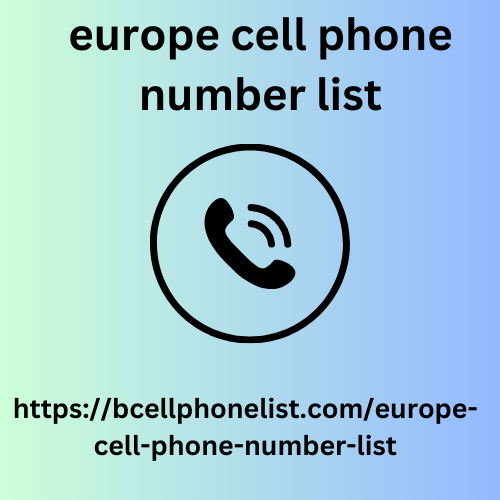Identify Relevant Segmentation Criteria: Determine the segmentation criteria that are most relevant to your business and marketing objectives. This could include demographic information (age, location, gender), psychographic traits (interests, values), purchase behavior, or engagement level. Choose criteria that align with your goals and allow for meaningful differentiation among your contacts. Collect and Analyze Data: Collect the necessary data points to segment your phone number list effectively. This may involve gathering information through sign-up forms, surveys, or tracking user behavior. Analyze the collected data to identify patterns, preferences, and characteristics that can inform your segmentation strategy.
Segment Based on Demographics
Start by segmenting your list based on demographic factors such as age, location, or gender. This helps you tailor your messages to specific groups Mexico Phone Number List with similar characteristics and preferences. Demographic segmentation provides a foundation for further refinement. Behavioral Segmentation: Segment your list based on user behavior and engagement. Identify individuals who have shown specific actions, such as making a purchase, visiting certain pages on your website, or interacting with your brand on social media. Use this information to target your messages based on their specific behaviors and interests. Personalization and Customization: Personalize your messages based on the segmentation criteria. Address contacts by their names and incorporate relevant details that are specific to their segment. Craft content that resonates with their interests, challenges, or needs.
The more personalized your messages
Automation and Drip Campaigns: Utilize automation and drip campaigns to deliver targeted messages based on segmentation. Set up automated AOL Email List sequences triggered by specific actions or milestones. This ensures that contacts receive relevant messages at the right time, nurturing their engagement and guiding them further along the customer journey. Monitor Feedback and Adjust: Pay attention to feedback from your segmented audience. Monitor responses, engagement metrics, and customer feedback. Adjust your messaging and segmentation strategies based on this feedback to better meet the needs and preferences of your contacts. Iterate and Evolve: Regularly review and update your segmentation strategy as your business evolves and your audience’s preferences change. Stay informed about emerging trends and adapt your segmentation criteria accordingly. Continuously seek new opportunities for refining your segments and delivering even more targeted messages.









